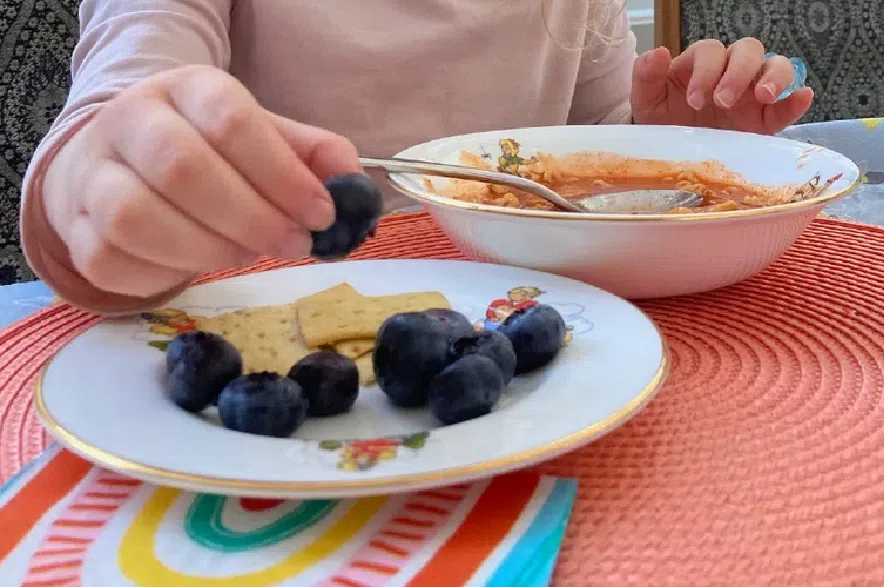With kids heading back to school next week, parents have a lot on their plates, including what to put in their kid’s lunchbox.
But balancing affordability, nutrition, and dietary restrictions can be hard enough without the added pressures of pleasing a picky eater.
Read more:
- Tips for parents as the cost of back-to-school supplies rises
- SHA prepares for routine school immunizations as classes resume
- Privacy report shines light on 2024 Sask. school division cyberattack
“I’m prioritizing things that she will eat, things that are healthy and things that are not going to have the kindergarten teacher calling me and saying, ‘No more sugar, please,’” parent Alex Furlong said about her daughter, Madison, who she described as a “very picky eater.”
While Madison really likes yogurt and granola bars, Furlong said another big hit has been sun butter and jam sandwiches.
“I know a lot of people send the thermos full of hot food, and we just default to sandwiches, because it’s safe,” Furlong said.
Courtney Berg, a registered dietitian and owner of Vitality Nutrition, shared her recommendations for parents still looking to find the right balance for picky eaters.
“Involve them in the process, so that they have a say in what they’re adding to the lunch,” Berg said about the kids she called “selective” eaters.
“If they’re able to chop up the cucumber or be a part of assembling their sandwich, they’re more likely to want to try it out, even if it’s a new food for them,” she explained.
Involving kids can also mean taking them to the grocery store and letting them pick out a meal, Berg added.
Berg said an added bonus is that by involving kids in their lunches at a younger age allows them to take over lunch-packing duties as they get older.
Another option for picky eaters is to try pairing healthy foods with some familiar favourites, Berg said, because it puts kids in a position where they’re more likely to try something new.
Framework for packing lunches
The foundation of a lunch should be whole foods, Berg said, which have are more dense in nutrients and can be more affordable, depending on what you pick.
She shared the four-step framework she uses when building a lunchbox.
The first step is to think about protein. Depending on your kid’s preferences, Berg said that could include Greek yogurt, chicken, beans or eggs.
The next is adding colour, like fruits and vegetables, through snacks like orange slices, cucumber, carrot sticks, apples or bananas. Berg suggested including your kid’s favourite veggie dip, so they’re more likely to eat them.
Third on the list is carbohydrates. Berg said the idea is to include whole grains through items like wraps, bread, crackers or even something sweet like a homemade muffin.
Finally, there’s healthy fats, a category which includes snacks like cheese, hummus and guacamole, but could also be added through cooking with olive oil.
Even within the framework, though, Berg said there’s still room for a treat.
“Maybe it’s a homemade cookie or a chocolate, or something that just kind of adds that element that’s really tasty and enjoyable for them,” Berg said, noting that adding a treat into lunches increases a kid’s interest in eating.
But with all the tips for kids, sometimes parents’ own lunches get forgotten.
Berg said that can be remedied by planning ahead and taking steps like making extras at dinner so you have leftovers, or focusing on buying “nutritious convenience foods” like tuna, rotisserie chicken and pre-chopped veggies.











